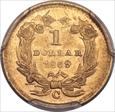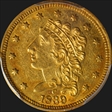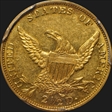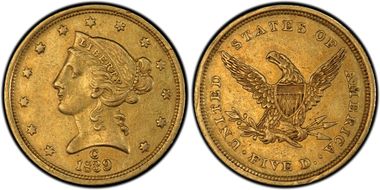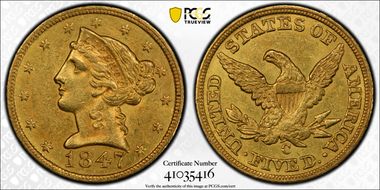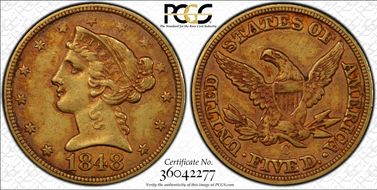OverlandTrail 的钱币相册
Since the open wreath variety of this coin is exceeding rare with only 5 known coins, the closed wreath is the only collectable variety for this date. This piece has the typical convex looking obverse and a reverse with a weakly struck date. A small tic in the obverse field is the only detraction on this green gold first year issue.
Since the open wreath variety of this coin is exceeding rare with only 5 known coins, the closed wreath is the only collectable variety for this date. This piece has the typical convex looking obverse and a reverse with a weakly struck date. A small tic in the obverse field is the only detraction on this green gold first year issue.
Since the open wreath variety of this coin is exceeding rare with only 5 known coins, the closed wreath is the only collectable variety for this date. This piece has the typical convex looking obverse and a reverse with a weakly struck date. A small tic in the obverse field is the only detraction on this green gold first year issue.
One of the rarest Charlotte gold dollars with only the excessively rare 1849 open wreath and the 1859 with less mintage. This piece has pleasing green-gold coloration with splashes of russet at the perimeter and traces of blue on Liberty's coronet and reverse lettering. Very well struck for this issue with the exception of a weak "c" mintmark. The smooth almost defect free surfaces add to the overwhelming eye appeal.
One of the rarest Charlotte gold dollars with only the excessively rare 1849 open wreath and the 1859 with less mintage. This piece has pleasing green-gold coloration with splashes of russet at the perimeter and traces of blue on Liberty's coronet and reverse lettering. Very well struck for this issue with the exception of a weak "c" mintmark. The smooth almost defect free surfaces add to the overwhelming eye appeal.
The California Gold rush and private minters like the Betchler's pressured Congress to adopt a new denomination, the gold dollar. The gold dollar was first produced in 1849 at all four mints, Philadelphia, New Orleans, Dahlonega, and Charlotte. This coin minted at the Charlotte Mint has beautiful golden toning and nice strike.
The California Gold rush and private minters like the Betchler's pressured Congress to adopt a new denomination, the gold dollar. The gold dollar was first produced in 1849 at all four mints, Philadelphia, New Orleans, Dahlonega, and Charlotte. This coin minted at the Charlotte Mint has beautiful golden toning and nice strike.
The 1852-c gold dollar is one of the two most common from this mint but is much harder to locate than its counterpart the 1851-c. Most 52-c dollars are seen in EF45-AU53 grades and nice AU specimens with natural color and surfaces are difficult to locate. This very pleasing slider example shows natural deep green-gold toning on obverse and reverse. The flatness of strike and some cabinet friction on this piece has limited the grade to AU58. On the reverse there is a mint-made planchet depression through the LA of Dollar. (per Douglas Winter)
The 1852-c gold dollar is one of the two most common from this mint but is much harder to locate than its counterpart the 1851-c. Most 52-c dollars are seen in EF45-AU53 grades and nice AU specimens with natural color and surfaces are difficult to locate. This very pleasing slider example shows natural deep green-gold toning on obverse and reverse. The flatness of strike and some cabinet friction on this piece has limited the grade to AU58. On the reverse there is a mint-made planchet depression through the LA of Dollar. (per Douglas Winter)
The 1852-c gold dollar is one of the two most common from this mint but is much harder to locate than its counterpart the 1851-c. Most 52-c dollars are seen in EF45-AU53 grades and nice AU specimens with natural color and surfaces are difficult to locate. This very pleasing slider example shows natural deep green-gold toning on obverse and reverse. The flatness of strike and some cabinet friction on this piece has limited the grade to AU58. On the reverse there is a mint-made planchet depression through the LA of Dollar. (per Douglas Winter)
The 1852-c gold dollar is one of the two most common from this mint but is much harder to locate than its counterpart the 1851-c. Most 52-c dollars are seen in EF45-AU53 grades and nice AU specimens with natural color and surfaces are difficult to locate. This very pleasing slider example shows natural deep green-gold toning on obverse and reverse. The flatness of strike and some cabinet friction on this piece has limited the grade to AU58. On the reverse there is a mint-made planchet depression through the LA of Dollar. (per Douglas Winter)
The 1855-C is numismatically significant as the only Type Two gold dollar from the Charlotte mint. It is also one of only two one-year types from this mint along with the 1839-C half eagle. The 55-C gold dollar is seen most often in EF40 to AU50 and properly graded AU53 coins are scarce. This example is better struck than usual and is found on an above-average quality planchet. As with many examples, there are clashmarks and some areas of roughness but the natural green-gold surfaces are more solid and eye appealing than usual for the issue. The date and mintmark are bold and the borders show nearly full detail. (per Doug Winter)
The 1855-C is numismatically significant as the only Type Two gold dollar from the Charlotte mint. It is also one of only two one-year types from this mint along with the 1839-C half eagle. The 55-C gold dollar is seen most often in EF40 to AU50 and properly graded AU53 coins are scarce. This example is better struck than usual and is found on an above-average quality planchet. As with many examples, there are clashmarks and some areas of roughness but the natural green-gold surfaces are more solid and eye appealing than usual for the issue. The date and mintmark are bold and the borders show nearly full detail. (per Doug Winter)
The redesign of the gold dollar did little to improve the quality of the 1857 issue as it is one of the poorest manufactured coins ever issued by a U. S mint. Most specimens are made with inferior dies and badly produced planchets. Virtually all examples exhibit weak, incomplete strikes with flat to little lustre. The present example is one of the better produced coins with a fairly good strike with some lustre enhanced by golden toning in the fields. This is about as attractive as this issues gets, which isn't saying much.
The redesign of the gold dollar did little to improve the quality of the 1857 issue as it is one of the poorest manufactured coins ever issued by a U. S mint. Most specimens are made with inferior dies and badly produced planchets. Virtually all examples exhibit weak, incomplete strikes with flat to little lustre. The present example is one of the better produced coins with a fairly good strike with some lustre enhanced by golden toning in the fields. This is about as attractive as this issues gets, which isn't saying much.
The redesign of the gold dollar did little to improve the quality of the 1857 issue as it is one of the poorest manufactured coins ever issued by a U. S mint. Most specimens are made with inferior dies and badly produced planchets. Virtually all examples exhibit weak, incomplete strikes with flat to little lustre. The present example is one of the better produced coins with a fairly good strike with some lustre enhanced by golden toning in the fields. This is about as attractive as this issues gets, which isn't saying much.
The 1859-C is the last gold dollar produced at the Charlotte Mint. It is also a candidate for the poorest made U.S. coin. Virtually all coins have inferior planchets, bad strikes, clashmarks, and other mintmade imperfections. Of the 3000 coins made virtually all possess less than average eye appeal. This representatives' eye appeal is about as good as it gets for this issue.
The 1859-C is the last gold dollar produced at the Charlotte Mint. It is also a candidate for the poorest made U.S. coin. Virtually all coins have inferior planchets, bad strikes, clashmarks, and other mintmade imperfections. Of the 3000 coins made virtually all possess less than average eye appeal. This representatives' eye appeal is about as good as it gets for this issue.
The 1839-C is one of two quarter eagle dates of the Classic design possessing the obverse "C" mint mark above the date. This coin has a nice green gold coloration combined with an early die state strike thus avoiding the numerous die cracks of later states. Luster abounds with some golden accents especially on the obverse. A rare coin with only a few graded higher
The 1839-C is one of two quarter eagle dates of the Classic design possessing the obverse "C" mint mark above the date. This coin has a nice green gold coloration combined with an early die state strike thus avoiding the numerous die cracks of later states. Luster abounds with some golden accents especially on the obverse. A rare coin with only a few graded higher
The Charlotte Mint was open for business in 1838 and the first coin produced was the half eagle of the Classic design. A one-year type coin with a scant mintage 17,179, and unlike its sister Dahlonega issue, was not saved as souvenirs, but harshly used in commerce. Therefore, remaining specimens show heavy worn, abraded surfaces. This coin is no exception being worn down to EF40 but with the reverse obverse escaping with little marks and the reverse some small gouges and light scratches. The coin has a light secondary yellow-gold toning and unlike most 38-c half eagles has nice eye appeal.
The Charlotte Mint was open for business in 1838 and the first coin produced was the half eagle of the Classic design. A one-year type coin with a scant mintage 17,179, and unlike its sister Dahlonega issue, was not saved as souvenirs, but harshly used in commerce. Therefore, remaining specimens show heavy worn, abraded surfaces. This coin is no exception being worn down to EF40 but with the reverse obverse escaping with little marks and the reverse some small gouges and light scratches. The coin has a light secondary yellow-gold toning and unlike most 38-c half eagles has nice eye appeal.
This first year type has exceptional smooth, nick-free, original surfaces, very uncharacteristic for the issue. Some luster still resides under the deep green-gold toning. A most attractive Charlotte specimen.
The most common Charlotte Half Eagle, but rare in mint state. This specimen has deep green-gold coloration with flashy satin luster and few nicks or imperfections.
This Charlotte half eagle is the epitome of crusty old gold. The piece has a thick skin of natural green gold coloration that extends to bathe devices and periphery in a gorgeous red to purple tone. Devoid of planchet defects, nicks or scratches, and satiny smooth surfaces only add to the eye appeal. Beneath the crusty surfaces some lustre is still evident on this colorful Charlotte creation.




















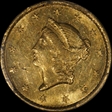
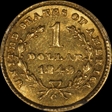
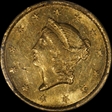
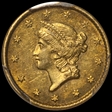
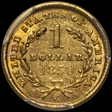
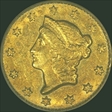
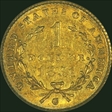
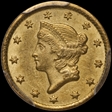
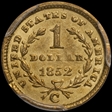
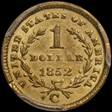
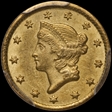
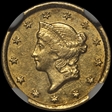
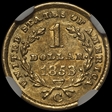
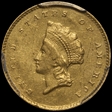
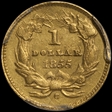

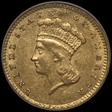
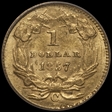
_album.jpg)
